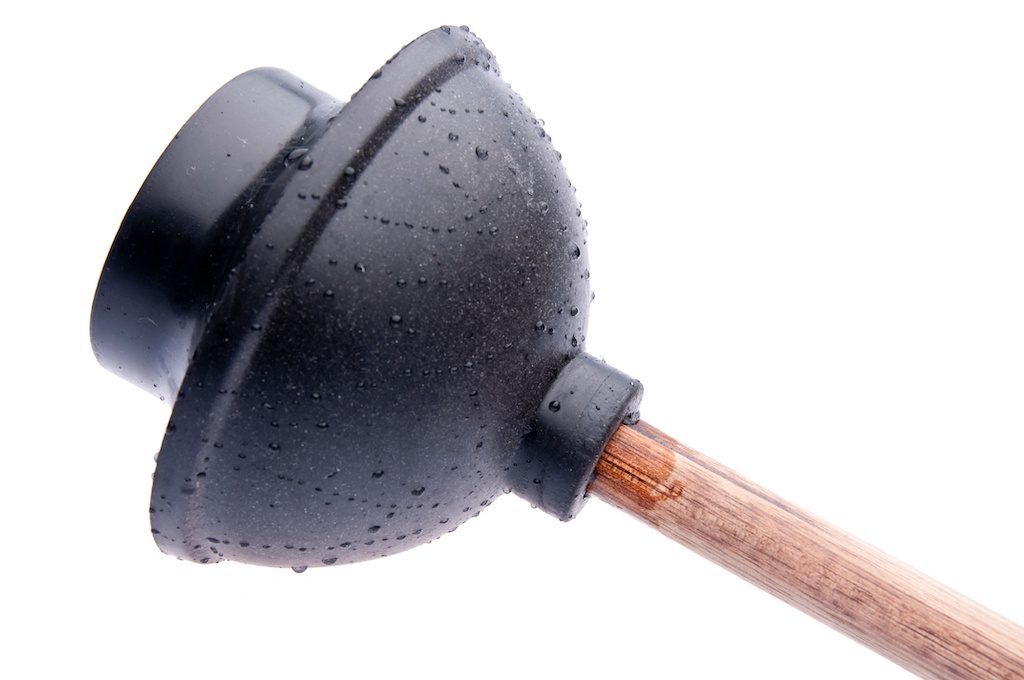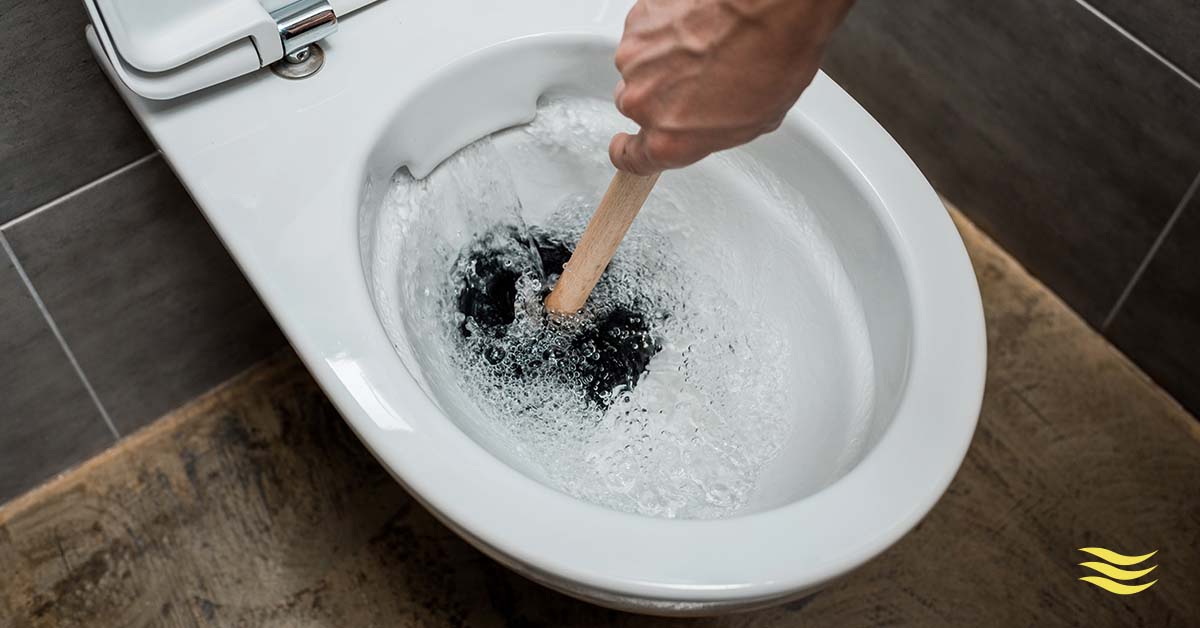You never know when a clogged toilet or sink will strike, and no one wants a dirty and stinky mess in their home! That’s why it’s important to have a powerful plunger at the ready. Affordable and simple to use, it can help you solve common drain problems—without needing to call your plumber right away. The only dilemma is: How do you know which type of plunger is right for you? Well, there are three main kinds, each serving a different purpose.
Types of plungers
1. Standard or sink plunger

When people think about plungers, this is the type that comes to mind most often. Sink plungers have a simple rubber cup connected to a long wooden handle. Sometimes the size of the cup can vary, but the general structure remains the same. Sink plungers are ideal for kitchen sinks, bathroom sinks, and bathtubs. They work best with flat surfaces where the rubber cup can form a tight seal.
2. Flange or toilet plunger

Toilet plungers have a lot in common with sink plungers, but with one significant difference: There is a flange on the bottom of the rubber cup. A flange is a fold-out flap that helps the plunger form a tight seal inside the toilet drain. This makes it easy for you to clear clogs in toilets, but the flange can also be used for sinks or tubs.
3. Accordion plunger

Accordion plungers are less common, but they work very well for tough toilet clogs. Designed with a single piece of plastic, they have a small cup that forms into accordion-like bumps and ridges. Many people find these types of plungers challenging to use. But, when you get it right, you can form an extremely tight seal and create strong suction. Just be careful with the plastic, as it can scratch your toilet.
How do plungers work?
Plungers work with the power of pressure and suction. Sealing the plunger over the drain and pushing it down increases the pressure in your pipes. This moves any water and clogs downward. Then, when you pull the plunger up, it creates suction against the seal, pulling water and clogging out from the inside.
How to use a plunger
- If your toilet or sink looks like it’s about to overflow, don’t try to flush away the water. Wait about 10 minutes for it to go down.
- If the bowl or sink is still too full after that, use a bucket to remove some water. If there is no water, add a little with the bucket, as this will help improve the plunger’s suction.
- Select the right plunger for the problem at hand: A sink plunger for your sink and a flange or accordion plunger for your toilet.
- Submerge the plunger in the water and line it up with the drain to form a tight seal.
- Push the plunger down, and then pull it up in quick movements. Do this for about 20 seconds, and keep it sealed against the drain.
- After this, your clog should be cleared! Your toilet should flush and your sink should drain properly. But, if you’re still having trouble, it’s time to call a plumber.
- When you’re not using your plunger, make sure it stays clean and dry. This will keep it in good condition and avoid any cracks from forming.
Let’s fix your clogged toilet or sink
Are your drain issues beyond the help of a plunger? Don’t worry; we’re here for you! Our plumbers harness our HDD Drain Vision Cameras to look deep into your drains—without needing to excavate them. After locating the clog, we flush it out with BIO Smart, an environmentally friendly cleaning solution. Book your plumbing service today!
Plunger FAQs
What’s the best type of plunger for a toilet?
Depending on your preference, a flange plunger or an accordion plunger. Simple to operate, the flange plunger has a flap that fits easily into the toilet drain. An accordion plunger functions similarly, but it requires a bit more dexterity. However, the ridged design provides more effective suction and plenty of force to clear clogs.
How do I choose a plunger?
Make sure you pick the right plunger for your needs! A flange or accordion plunger is best for toilets. A standard or sink plunger is ideal for (you guessed it!) sinks. Once you’ve figured that out, find a plunger with a good grip to make it easy to maneuver. It should also be able to form a tight seal, so make sure there are no cracks or deformities along the cup.
What kind of plunger do plumbers use?
Plumbers may use a taze plunger to clear clogs along with the above plungers. Taze plungers have a steel rod that connects to a snake that goes down your drain. These tools are best reserved for professionals, so make sure a qualified plumber is helping you with this. Plumbers may also use a snake or drain auger to clear nasty clogs. These flexible wire coils extend into your drain pipe to either pull or push the obstruction out.
Why does my toilet keep clogging?
There are a variety of reasons why your toilet might keep clogging.
- Family members may be flushing feminine products, wet wipes, or too much toilet paper down.
- There could be grease, calcium, minerals, and household cleaning products built up in your pipes.
- Your S-trap or P-trap may be blocked, making the clog impossible to clear with a plunger. S-traps and P-traps are serpentine sections in your pipes that prevent odourous gas from releasing.
- Your plumbing vents, which are ventilation pipes that release sewer gas from your home’s roof, could be blocked.
If clogging is becoming a consistent problem in your home, contact us to investigate and fix the issue!
Do plungers push or pull?
Plungers both push and pull! Thanks to physics (more specifically, Boyle’s Law), the seal moves clogs inward as you push the plunger down. As you pull the plunger up, the plunger extracts clog out.
Can you use Draino in a toilet?
No! Draino is meant for sinks and bathtubs. Do not use it in a toilet. Our plumbers recommend more environmentally friendly products than Draino. We use BIO Smart to get rid of clogs in toilets and sinks. Biodegradable and pathogen-free, it naturally harnesses biological digestion to eliminate organic waste and grease.

